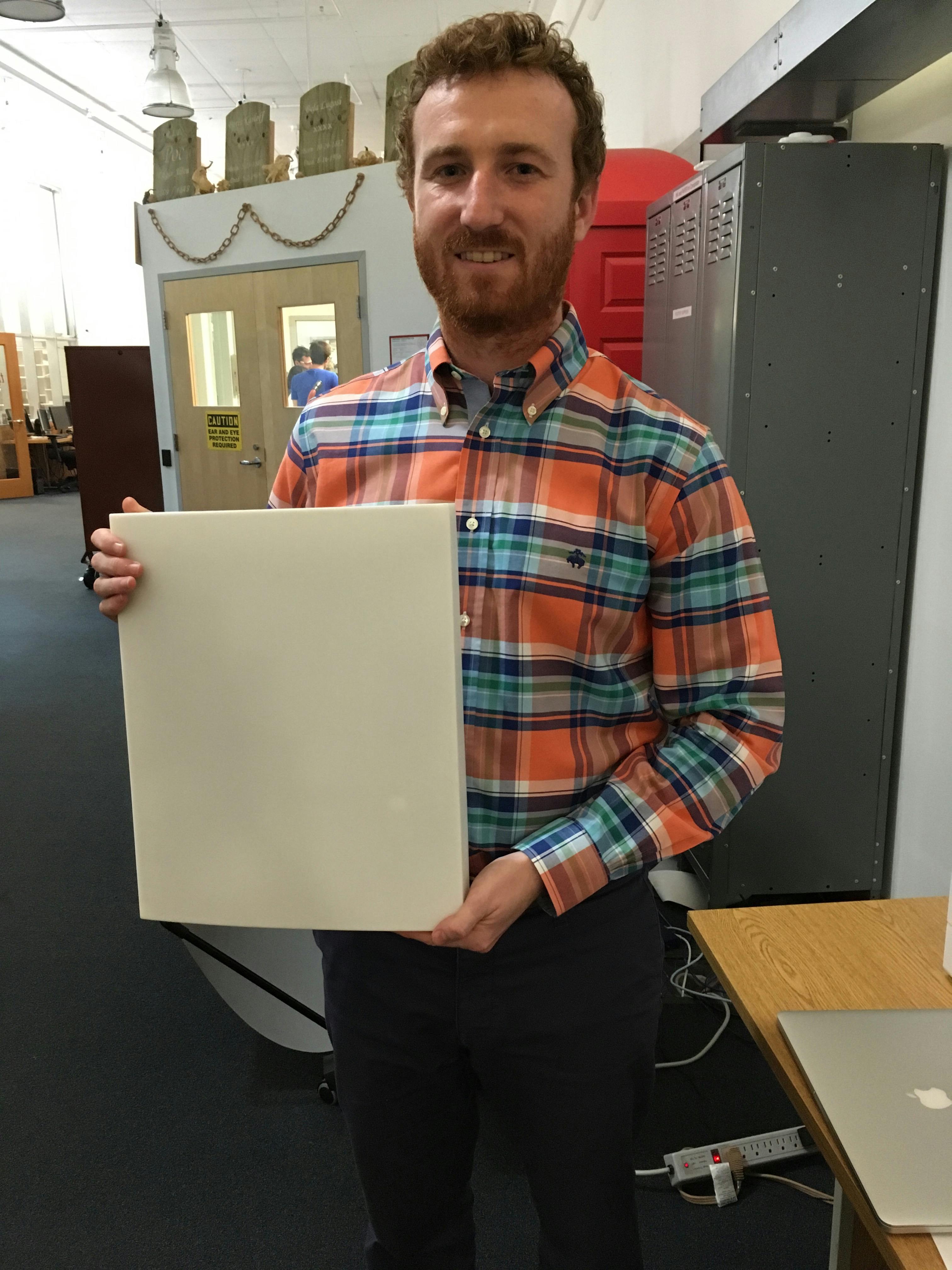THE ACCEPTANCE OF HOME HEALTH monitoring systems for people with chronic diseases has accelerated in recent years. Wearables can track patients when they are on the go, and voice technology has been invaluable for people with mobility issues. What has been missing is something that can visually track movement without needing a device attached to the body—a completely passive monitoring system.
In January 2013, a team at MIT’s Computer Science and Artificial Intelligence Lab (CSAIL) started the Emerald project. The idea was to invent a home monitor to track the movements of patients with chronic diseases, so that quick interventions could be made if necessary. Such a device could reduce hospital stays and help researchers develop better drugs and treatments.
Zachary Kabelac, a senior PhD student in engineering at MIT, and Dina Katabi, MIT professor of electrical engineering and computer science, have worked on the project since its creation. Their initial versions used Wi-Fi, which is attractive for its ubiquity, but later versions employ an ultra-wideband signal (Wi-Fi is better for data transmission and communication, not sensing). The device transmits a radio signal that is 10,000 times weaker than Wi-Fi, but strong enough to see through any obstruction, including walls. Its range is 40 feet (12 m), or about the size of a one- or two-bedroom apartment.
Any movement, even from breathing and sleeping, changes the radio signals that reflect off the body and back to the monitor. The monitor then transmits the data via Wi-Fi or LTE to a secure server, where signal processing and machine learning algorithms are applied to convert the signal into health metrics.
Emerald is being developed for post-diagnosis to track the progression of disease symptoms or the effectiveness of a treatment. Kabelac says pulmonologists, geriatricians, neurologists, and other specialists have been crucial in identifying which metrics are important. These specialists are from institutions that include Massachusetts General Hospital, Brigham and Women’s Hospital, McLean Hospital, and University of Rochester Medical Center. “Currently, we process the data, then analyze and interpret it side-by-side with the doctors. We are working to identify clinically meaningful health metrics and insightful visualizations to most effectively help them with their care.”
Some of the metrics gathered include gait speed, balance, respiration, sleep, and even the vibration of a heartbeat. Kabelac explains, “When you’re asleep, your chest is expanding and contracting, your heart’s beating, and sometimes your arm or leg jitters. We use that collection of movement to infer your sleep stage.”
THE NEUROLOGIST CHRIS TAROLLI OF THE University of Rochester participated in a pilot study. He explains via email, “The device allowed us to continuously collect objective data on sleep, mobility, falls, activity patterns, socialization, and other features of daily life. This is invaluable in research, allowing us to make novel insights into the natural history of chronic diseases, fluctuations in daily activities, and effects of medications.”
Back in 2017, Constance, a patient with multiple sclerosis (MS), had Emerald hanging on her kitchen wall for a year. Back then, Emerald couldn’t detect slight movements like chest expansion, but could track her gait and also that of her family members. Emerald was able to distinguish her movements because, with a walker, she moved slower. Its data was more comprehensive and accurate than other data because of the way it tracked patterns. “When I go to the doctor, they have me walk 25 yards, and you’re supposed to walk as fast as you can. I’m trying my hardest. Emerald shows that really I don’t walk that rate.” Constance barely noticed the device, which can be turned off at will. “I didn’t think anything of it. It’s just a white plastic box.”
THE EMERALD SYSTEM PRESENTS INTRIGUING possibilities for pharmaceutical companies, which are interested in collecting data from the home both during and after clinical trials. Typically, clinical assessments are only recorded at infrequent doctor visits and through self-reported tools like diaries and questionnaires. Novartis, Pfizer, and Leo Pharma are all integrating Emerald into their clinical trials.
One use would be for tweaking drugs’ dosage. For example, a common medication for multiple sclerosis is Ampyra, manufactured by Acorda Therapeutics. Throughout the day, it depletes in the bloodstream. The motor fluctuations of a patient can indicate whether the drug’s delivery could be improved, either in the amount given or the time it should be taken.
Constance experienced this pattern. The MIT team saw that by the end of the day, her pace slowed significantly. “I’m on slow-release medication, so when the medication was winding down, they could tell I wasn’t moving as well.”
One unexpected Emerald benefit is with scheduling staff in assisted-living homes. With geriatric patients, the team started to see behavioral patterns. Some people are rarely in their rooms. Some people stay in their rooms all day except for meals. It’s hard for staff to cater to individuals, but with the device, the patterns become clear.
Kabelac believes that there are many potential applications for pulmonary, neurological, and rare diseases like Duchenne muscular dystrophy, as well as for dementia, where sleep disruption can indicate cognitive decline. Movements can also indicate musculoskeletal diseases, and injuries like sarcopenia and hip fractures.
Kabelac is particularly excited about the implications for neurological diseases that are difficult to detect though biomarkers, with symptoms that fluctuate widely. “The only way you can really judge them is by tracking the symptoms over time. Otherwise, all doctors see, like on a doctor’s visit, is a snapshot.”
Now working on version 7, the CSAIL team hopes to translate health metrics into more detailed analysis and get to market in about two years.










